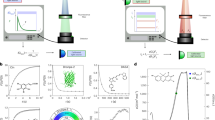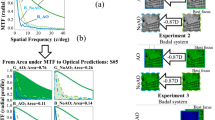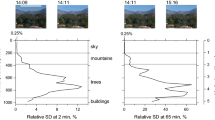Abstract
RECENTLY, I have been photographing spectra in their natural colours with 35 mm. Dufaycolor film. The spectra were produced by a single 60° flint prism. 35 mm. film is used in a camera of 5 cm. focal length and, if this camera had been used by itself, the spectra would have been much too short. I therefore tried to photograph them through the telescope of the spectrometer ; that is, the telescope object glass and eyepiece were left in position and the camera placed immediately after the eyepiece. The telescope had a magnification of about 11 times, so this would increase the angular extent of the spectrum from 2½° to 27½°. I found that the field of view of the spectrometer eyepiece was too narrow, but on substituting the eyepiece of a prismatic field-glass which took in a cone of semivertical angle 128' instead of the previous 53', the experiment succeeded ; the visible spectrum covered the full breadth of the film and was in perfect focus from end to end.
This is a preview of subscription content, access via your institution
Access options
Subscribe to this journal
Receive 51 print issues and online access
$199.00 per year
only $3.90 per issue
Buy this article
- Purchase on Springer Link
- Instant access to full article PDF
Prices may be subject to local taxes which are calculated during checkout
Similar content being viewed by others
Author information
Authors and Affiliations
Rights and permissions
About this article
Cite this article
HOUSTOUN, R. A Simple Way of Photographing Spectra. Nature 161, 973–974 (1948). https://doi.org/10.1038/161973a0
Issue Date:
DOI: https://doi.org/10.1038/161973a0
Comments
By submitting a comment you agree to abide by our Terms and Community Guidelines. If you find something abusive or that does not comply with our terms or guidelines please flag it as inappropriate.



